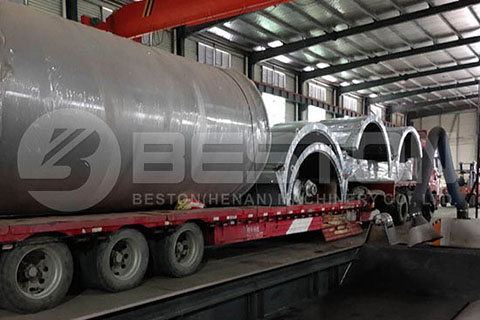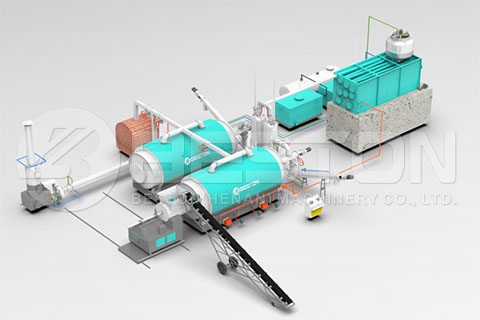If you are looking for some modern machinery that can recover valuable commodities from used tires, a pyrolysis machine is what you need. Such a plant can turn all manner of rubber-based waste materials into tradable end products. Furthermore, the conversion process does not involve the emission of any toxic fumes into the air. So, if you are looking for a zero-pollution, environmentally-friendly tire recycling plant setup, it’s time to explore the waste tire pyrolysis plant marketplace.

Tire to oil machines based on pyrolysis technology have made a huge contribution to the world’s mounting tire waste problems. The end products that can be harvested from scrap road tires using such machines include tire oil, carbon black, combustible gas and steel. With such machines, waste disposal management companies no longer have to send tire waste to incinerators or waste burial sites. Did you know that a typical tire can take over eight decades to decompose and it presents a massive fire-risk on landfill sites? Furthermore, the world’s largest tire graveyard in Kuwait can be seen from space.
Fortunately, pyrolysis reactors enable rubber recycling firms to generate big profits from non-biodegradable waste material. It’s great that the environmentally-friendly waste tire disposal processing methods are now commercially viable for businesses in many countries. Recycling firms can avail of a fast and big return on investment rates from the modern tyre to oil plant. What’s more, the newest models from international pyrolysis plant manufacturers are manufactured to comply with some of the strictest national and international emissions regulations. This means that businesses in just about every country can get involved in the lucrative pyrolysis-based tire recycling industry.

There are many core factors that contribute to the eventual cost of a waste tire pyrolysis system. Some of the main components in such a system include tire grinder, drying machine, pyrolysis reactor, oil gas manifold, recycled water-cooled condensing tube network, oil storage tanks, dedusting system, oil distillation machinery and much more. Machines that are manufactured from high-grade components are certainly likely to cost more, but they are also likely to have a longer working life span. This means investors need to do many cost-benefit calculations when deciding which rubber waste pyrolysis plants to buy.
The size and daily processing capability specs, of course, have a big influence on tyre recycling plant cost, along with automation levels and working methods. Batch/manual used tire pyrolysis plants typically cost less than fully continuous scrap tire pyrolysis plants. Of course, a bigger initial investment can equate to higher returns. Also, it’s important to know that pyrolysis reactors that have continuous design configurations are more energy efficient.
So if you are looking to minimize fuel costs, a continuous pyrolysis plant with a horizontal/fixed reactor pattern design is the way to go. Batch working method plants are generally more affordable, but they have rotary reactor pattern configurations, which are less stable and less energy efficient. In the end, it’s all about weighing up the benefits and drawbacks of different machines and choosing a model that meets your business’s budget restraints.